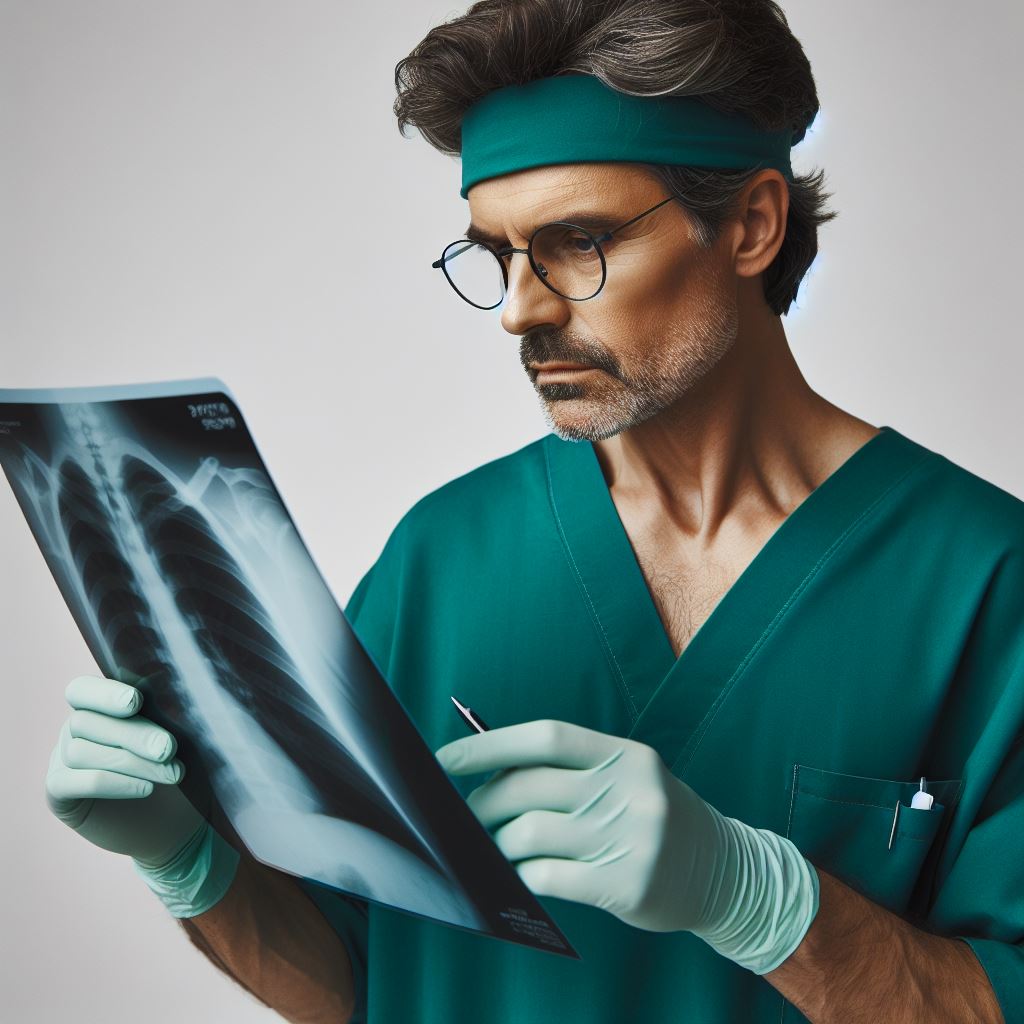Introduction
A. Latest Surgical Technologies in Perth
Perth is at the forefront of embracing cutting-edge surgical technologies, revolutionizing medical practices and patient care.
B. Importance of Staying Updated
Staying abreast of surgical innovations is crucial. It ensures medical professionals deliver optimal care and patients receive the best treatments available.
C. Benefits to Healthcare and Patients
- Precision and Accuracy: Advanced surgical tools enhance precision, reducing the margin of error in procedures.
- Faster Recovery Times: Modern technologies often lead to quicker healing, minimizing downtime for patients.
- Minimally Invasive Techniques: Perth adopts minimally invasive surgeries, reducing trauma, scarring, and recovery periods.
- Enhanced Diagnostics: State-of-the-art imaging technologies aid accurate pre-surgical planning, optimizing outcomes.
- Improved Patient Experience: These technologies contribute to more comfortable and efficient healthcare experiences for patients.
Stay tuned as we delve into specific groundbreaking technologies shaping Perth’s surgical landscape, promising better outcomes for both medical professionals and the individuals under their care.
Robotic-Assisted Surgery
A. Robotic-assisted surgery and its significance
Robotic-assisted surgery is an innovative approach that combines the precision of robotic technology with the expertise of surgeons to perform complex procedures with improved outcomes and reduced invasiveness.
B. The da Vinci Surgical System
One popular robotic system used in Perth is the da Vinci Surgical System, which allows surgeons to perform minimally invasive procedures with enhanced precision.
The da Vinci system consists of robotic arms equipped with specialized instruments and a high-definition 3D camera.
The surgeon controls the robotic arms while seated at a console, providing precise and steady movements.
C. Precision, Improved Outcomes, and Reduced Invasiveness
Robotic-assisted surgeries offer several advantages compared to traditional procedures:
- Precision: The robotic arms can make highly precise movements, minimizing the risk of human error.
- Improved outcomes: The enhanced precision can lead to improved surgical outcomes, including reduced complications and faster recovery.
- Reduced invasiveness: Robotic-assisted surgeries require smaller incisions, resulting in less scarring, pain, and a shorter hospital stay.
D. Commonly Utilized Surgeries with Robotic Assistance
Robotic assistance is commonly utilized in various surgical procedures, including:
- Prostatectomy: Robotic-assisted prostatectomy allows for precise removal of the prostate gland in the treatment of prostate cancer.
- Hysterectomy: Robotic-assisted hysterectomy offers a minimally invasive approach for the removal of the uterus, often resulting in faster recovery for patients.
- Cardiac surgery: Robotic systems enable surgeons to perform intricate cardiac procedures with enhanced precision and reduced trauma to the patient.
- Colorectal surgery: Robotic-assisted colorectal surgery can be used for procedures such as colectomy, which involves the removal of part of the colon.
Robotic-assisted surgery, exemplified by the da Vinci Surgical System, has revolutionized the field of healthcare in Perth.
Through its precision, improved outcomes, and reduced invasiveness, robotic assistance has transformed the way complex procedures are performed.
By embracing these latest surgical technologies, Perth continues to enhance patient care and treatment outcomes.
Read: Aussie Paramedics: Career Growth Prospects
3D Printing in Surgical Procedures
The integration of 3D printing technology into surgical procedures in Perth signifies a transformative era in the healthcare industry.
This innovative approach has redefined the landscape, particularly in the creation of patient-specific implants and surgical models.
The application of 3D printing has opened unprecedented avenues for personalized medicine, substantially enhancing patient outcomes.
A key advantage lies in the ability to craft implants with precision before the surgery, mitigating the need for time-consuming adjustments during the procedure.
Traditional methods often necessitate modifications on the spot, posing challenges and increasing the risk of complications.
In contrast, the implementation of 3D printing ensures that surgeons have customized implants and models ready beforehand, translating to shorter surgery times and optimizing the efficiency of the healthcare system.
Perth has witnessed notable success stories, underscoring the impact of 3D printing on surgical precision.
In cases requiring intricate jaw reconstruction, surgeons leveraged 3D printing to create exact replicas of patients’ jaws.
This pre-surgical planning not only resulted in shorter surgery times but also markedly improved outcomes.
The technology has also been instrumental in the development of patient-specific surgical models, enabling surgeons to rehearse complex procedures and formulate personalized surgical plans.
The tangible models offer an in-depth understanding of patient anatomy, facilitating better anticipation of potential challenges and further contributing to enhanced surgical accuracy and patient safety.
As 3D printing technology continues to evolve, its integration into surgical procedures is anticipated to bring further advancements.
Surgeons in Perth, through harnessing the advantages of 3D printing, are at the forefront of achieving shorter surgery times, enhanced accuracy, and improved overall patient satisfaction.
This trajectory underscores the potential of 3D printing to revolutionize surgical practices, shaping a future where personalized and precise healthcare becomes the norm.
Read: Internship Insights: Becoming an Aussie Paramedic
Minimally Invasive Surgical Techniques
Minimally invasive surgical techniques have become increasingly popular in recent years.
These procedures involve smaller incisions and the use of specialized instruments, resulting in numerous benefits for patients.
A. Growing Trend of Minimally Invasive Surgical Techniques
There is a growing trend towards the use of minimally invasive surgical techniques. Patients and surgeons alike are realizing the advantages of these procedures.
Your Personalized Career Strategy
Unlock your potential with tailored career consulting. Get clear, actionable steps designed for your success. Start now!
Get StartedFirst and foremost, minimally invasive surgeries involve smaller incisions compared to traditional open surgeries.
The size of the incisions can range from a few millimeters to a few centimeters.
Furthermore, these techniques rely on the use of specialized instruments such as endoscopes, laparoscopes, or robotic tools.
These instruments allow surgeons to access the surgical site with precision and perform complex procedures with ease.
The improved visualization provided by these instruments enables surgeons to see the surgical area in detail, enhancing the accuracy of their movements.
This ultimately leads to better outcomes and reduced risk of complications.
Additionally, minimally invasive surgeries often result in reduced scarring due to smaller incisions.
This is particularly important for aesthetic reasons, as patients are increasingly concerned about visible scars.
Moreover, because these surgeries are less invasive, patients experience shorter recovery times compared to traditional open surgeries.
This means less time spent in the hospital and a quicker return to daily activities, including work and exercise.
B. Benefits of Minimally Invasive Surgeries
The benefits of minimally invasive surgeries are numerous. Aside from reduced scarring and shorter recovery times, these procedures also offer fewer complications.
Patients who undergo minimally invasive surgeries generally experience less pain and discomfort postoperatively.
The use of smaller incisions reduces tissue trauma, resulting in reduced pain and the need for pain medication.
Furthermore, smaller incisions also lead to lower risks of infection and bleeding, as well as decreased rates of wound dehiscence (opening of the surgical incision).
Additionally, minimally invasive surgeries often require shorter hospital stays. This not only reduces healthcare costs but also lessens the risk of hospital-acquired infections.
C. Specific Surgeries or Procedures in Perth
In Perth, there are several surgeries and procedures where minimally invasive techniques are commonly used.
For example, laparoscopic cholecystectomy is a minimally invasive procedure commonly performed to remove the gallbladder.
This procedure involves making a few small incisions in the abdomen and using a laparoscope to visualize and remove the gallbladder.
Another commonly performed minimally invasive surgery in Perth is arthroscopic knee surgery.
This technique allows surgeons to diagnose and treat various knee conditions using small incisions and an arthroscope.
Furthermore, Perth is known for its advanced use of robotics in minimally invasive surgeries.
Robotic-assisted procedures, such as robotic prostatectomy or robotic hysterectomy, offer even greater precision and control for surgeons.
In short, the growing trend of minimally invasive surgical techniques in Perth has revolutionized the field of surgery.
These techniques result in smaller incisions, specialized instruments, reduced scarring, shorter recovery times, and fewer complications.
Patients in Perth can benefit from a wide range of minimally invasive surgeries, improving their overall surgical experiences and outcomes.
Read: Continual Learning for Australian Paramedics

Surgical Imaging and Navigation Systems
A. The role of surgical imaging and navigation systems in enhancing surgical procedures
The use of surgical imaging and navigation systems plays a crucial role in enhancing surgical procedures.
These advanced technologies have revolutionized the field of surgery, allowing for greater precision and accuracy.
By incorporating real-time guidance, surgeons are able to perform complex operations with improved outcomes.
Stand Out with a Resume That Gets Results
Your career is worth more than a generic template. Let us craft a resume and cover letter that showcase your unique strengths and help you secure that dream job.
Get HiredB. The use of advanced imaging techniques, such as intraoperative MRI or CT scans
One major benefit of surgical imaging and navigation systems is their ability to provide surgeons with detailed images of the patient’s anatomy.
These systems utilize advanced imaging techniques, such as intraoperative MRI or CT scans, to generate high-resolution images.
This allows surgeons to visualize intricate structures, such as blood vessels or nerves, in real-time during the surgery.
C. The benefits of surgical navigation systems, including real-time guidance during surgeries
With the aid of these advanced imaging techniques, surgeons can plan and execute surgical procedures with greater precision.
They can identify and avoid critical structures, reducing the risk of complications.
For example, in neurosurgery, surgeons can use image-guided navigation systems to precisely locate brain tumors or plan the trajectory of a surgical tool to minimize damage to surrounding healthy tissue.
D. Specific examples in Perth where surgical imaging and navigation systems have been utilized effectively
One specific example of the effective utilization of surgical imaging and navigation systems in Perth is in orthopedic surgery.
In joint replacement surgeries, such as knee or hip replacements, these systems allow for precise positioning of implants.
The surgeon can align the prosthetic joint with the patient’s natural anatomy, resulting in improved joint function and longevity.
Another application of surgical navigation systems is in minimally invasive surgeries.
These systems provide real-time guidance to surgeons, enabling them to navigate through small incisions with accuracy.
For instance, in laparoscopic procedures, surgeons can use navigation systems to identify specific anatomical landmarks, ensuring that critical structures are avoided.
Overall, the benefits of surgical imaging and navigation systems are numerous.
They enhance surgical precision, reduce the risk of complications, and improve patient outcomes.
These technologies are rapidly evolving and are expected to play an even greater role in the future of surgery.
Read: Paramedics and Public Health in Australia
Telehealth and Remote Surgery
A. The emergence of telehealth and its impact on surgical procedures
Telehealth has emerged as a groundbreaking technology in the field of surgical procedures.
It has revolutionized the way healthcare professionals provide consultations and perform surgeries remotely.
B. How telehealth enables remote consultation and surgeries.
Through telehealth, patients can now have virtual consultations with specialized surgeons without having to travel long distances.
This technology has significantly improved access to medical expertise for patients in Perth.
One of the key advantages of telehealth is that it enables remote consultation and surgeries.
Surgeons can conduct a thorough examination of patients using high-definition cameras and real-time video conferencing.
C. Benefits of telehealth in terms of access to specialized surgeons and reduced travel requirements for patients
The benefits of telehealth are manifold. Firstly, patients no longer need to travel to seek specialized surgeons.
This reduces the burden of long distance travel, especially for patients who live in remote areas.
- Telehealth allows patients to receive expert care without the need for extensive travel.
- Patients can access specialized surgeons who may not be available locally.
- Telehealth reduces the waiting time for consultations, providing timely medical interventions.
- Through telehealth, patients can have access to second opinions from renowned surgeons.
Perth has witnessed the implementation of various telehealth programs and initiatives to meet the growing demand for remote surgical consultations.
D. Specific telehealth programs or initiatives in place within the medical community of Perth
One such program is the Telehealth Service provided by the Royal Perth Hospital, which offers virtual consultations and remote surgeries for patients across Western Australia.
This program has significantly improved access to specialized surgical care.
Another notable initiative is the Telehealth for Schools program, which ensures that children in remote areas have access to medical consultations, including surgical assessments, without the need to travel long distances.
Furthermore, the Western Australia Country Health Service has implemented the Rural Health West Telehealth program.
This initiative aims to enhance healthcare delivery to rural communities by offering remote consultation and surgeries, reducing the need for patients to travel great distances.
Telehealth has transformed the healthcare landscape in Perth, benefiting both patients and healthcare professionals.
It has bridged the gap between patients and specialized surgeons, providing access to expert care regardless of geographical location.
Most importantly, telehealth has revolutionized surgical procedures by enabling remote consultation and surgeries.
Its implementation in Perth has significantly improved access to specialized surgeons and reduced travel requirements for patients.
With the various telehealth programs and initiatives in place, the medical community in Perth is embracing this technology to provide high-quality healthcare to all.
Conclusion
The latest surgical technologies used in Perth have revolutionized the healthcare industry.
These cutting-edge advancements have improved surgical precision, reduced complications, and enhanced patient outcomes.
It is crucial for healthcare professionals in Perth to embrace these latest technologies for providing the highest quality of care.
Staying updated on the advancements in surgical technologies is of utmost importance.
By keeping abreast of the latest developments, healthcare professionals can implement innovative techniques that lead to better healthcare outcomes.
Embracing these technologies not only benefits the patients but also enhances the skills and expertise of surgeons in Perth.
It is essential for readers to understand the significance of staying informed about the latest surgical technologies.
By doing so, they can actively participate in their own healthcare decisions, ask relevant questions to healthcare professionals, and advocate for the use of advanced technologies.
This proactive approach can lead to better surgical outcomes and improved overall healthcare experiences.
In the end, the rapid advancements in surgical technologies have transformed the landscape of healthcare in Perth.
By embracing and utilizing the latest technologies, healthcare professionals can provide optimal care, ultimately leading to better patient outcomes.
It is crucial for both professionals and patients to stay updated and informed about these advancements to ensure the highest standard of healthcare delivery.
Transform Your LinkedIn for Maximum Impact
Elevate your professional brand with a LinkedIn profile that attracts recruiters, showcases your expertise, and maximizes opportunities. Stand out in your industry with a profile built for success.
Boost Profile



